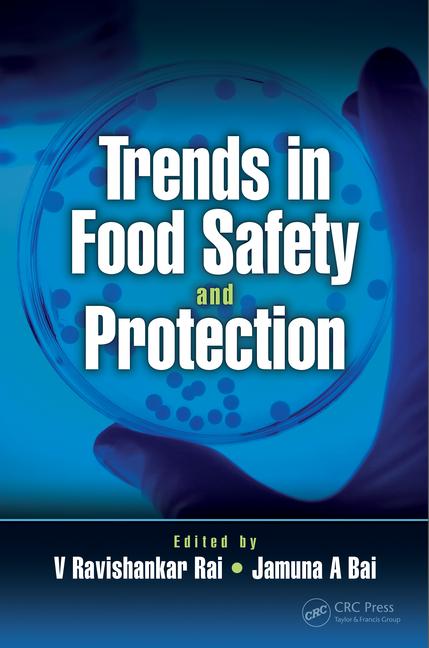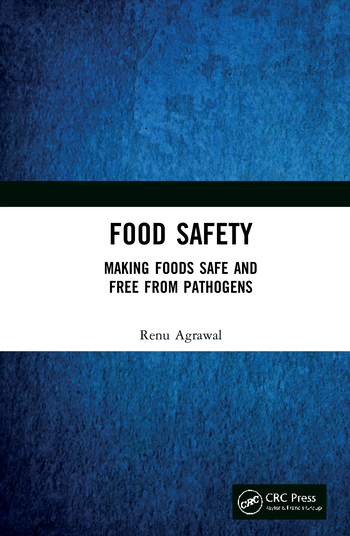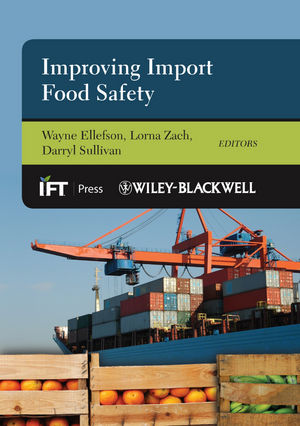Traceability Update: Regulatory and Cultural Trends Shift from Response to Prevention

During the past 10 years, outbreaks of foodborne illnesses in fresh food categories such as spinach, cantaloupe and peanuts have raised important questions among consumers about the nation’s ability to protect the food supply. As a result, regulatory oversight of food, along with pharmaceuticals, medical devices and other consumer products, has become a priority of the U.S. Food and Drug Administration.
This shift, coupled with the consumer’s insatiable hunger for nutritional and allergen information, has pushed the food industry into a more preventive state, with the heaviest emphasis on food traceability that we have ever seen. Facing these rapid cultural and regulatory advances, industry has the opportunity to further exploit the efficiencies of the ubiquitous barcode and leverage a common language of business for identifying, capturing and sharing product information among trading partners to further fulfill today’s demands. Let’s take a look at the ways GS1 Standards (which uniquely identify items and provide a link between the item and information pertaining to it) can enable the critical food traceability processes needed to prepare both the retail grocery and foodservice sectors for the future.
Traceability Defined
Traceability is the ability to verify the identity, history, location or application of an item by documented information. The most critical piece of traceability is supply chain visibility, which allows trading partners to know where a product is at any point on the product’s journey. Many industry stakeholders are paying greater attention to the benefits of supply chain visibility not just because they anticipate the application of the Food Safety and Modernization Act will require them to have better traceability capabilities, but also because they have realized operational efficiencies when they can better see the details of their internal processes as well as where the product originated and where it’s going.
Enabling whole-chain traceability involves linking businesses’ internal proprietary traceability systems with external systems through the use of one global language of business across the entire supply chain. Standards enable trading partners in the global supply chain to talk to one another through the identification encoded in barcodes. By using the same standards to identify and capture data about products, companies can share specific product information more efficiently and accurately, which ultimately benefits both businesses and consumers.
GS1 Standards enable companies to uniquely identify products worldwide in the supply chain to optimize visibility and efficiencies, as well as overcome limitations of proprietary solutions and systems. Using GS1 identification numbers, including the Global Trade Item Number® (GTIN®), companies worldwide can identify trade items as well as supplementary information (e.g., expiration date, batch/lot number) to facilitate the communication of product-specific information when a barcode is scanned. Organizations that have full visibility based on these standards ultimately gain the ability to better protect their brands and enhance their company image by knowing the exact attributes and location of each product.
The Need for Evolution
While traceability processes are common today, our ability to fully track and trace food remains limited. A recent report from the U.S. Department of Health and Human Services stated that only 5 of 40 food products purchased for a traceability study could actually have all of their disparate ingredients traced back through the supply chain to their origins. The reasons vary—businesses may not maintain specific lot information, or grown ingredients from different farms are mixed into one case. Whatever the disconnect may be, all trading partners are being asked to step up their ability to trace products “one up” and “one back” in the supply chain, as outlined in the Bioterrorism Act of 2002.
Consumers are also demanding more access to better information about what they consume. The hyperconnected grocery shopper scanning barcodes with her phone at the store or looking up nutritional information about menu items is forcing a movement toward greater transparency. More than half of all adult cellphone owners (52%) use their devices while in a store to get help with purchasing decisions, according to research from the Pew American & Internet Life Project.[1] As more consumers opt for online grocery shopping, new data quality challenges are surfacing, too. Based on new research, BI Intelligence predicts that by 2018, online grocery sales will grow at a compound annual rate of 21.1 percent, reaching nearly $18 billion by the end of the forecast period.[2] For comparison, off-line grocery sales are projected to rise by 3.1 percent annually during the same period.
Together, these regulatory and cultural trends signify the industry’s shift from responding to food safety events to their prevention.
The Need for Collaboration
Increasing consumer confidence in food safety—and becoming more customer-centric in general—is a collaborative effort among businesses, trade associations, industry groups and regulatory agencies. This is true for both the retail grocery and foodservice channels.
Last summer, retail grocery industry stakeholders kicked off a new aligned initiative to further enhance supply chain operations. The GS1 US Retail Grocery Initiative[3] was designed to identify emerging industry challenges and facilitate collaboration to develop implementation guidance utilizing GS1 Standards to address key issues and drive supply chain efficiencies, creating a more powerful, singular approach by all industry stakeholders. This group is composed of a cross-section of grocery industry trading partners: suppliers, manufacturers, distributors, wholesalers, retailers, logistics and technology providers and industry associations. The focus areas they will discuss in the year ahead include standardizing product information including images, supply chain visibility and creating operational efficiencies.
This initiative is timely, as businesses realize that profitable growth can result from effectively leveraging the combined strength of their trading partner network. In a recent study of next-generation collaboration, Accenture concluded that the potential first-year value of improved retailer-supplier collaboration could total up to $50 billion in reduced capital spending, up to $125 billion in reduced operating expenses and up to $90 billion in reduced manufacturing and distribution costs. The GS1 US Retail Grocery Initiative is focusing its efforts to help industry address the challenges impacting their businesses now and for many years ahead. Through a formal initiative, members can provide their thought leadership and expertise to shape the future of the industry and address a few critical industry issues to drive solutions faster, better and more efficiently, enabling broad industry adoption.
Additionally for the foodservice industry, tremendous progress was made in 2014; in the year ahead, maintaining a focus on implementation will prove critical in supporting key food traceability goals. More than 20 leading distributors, in collaboration with the International Foodservice Distributors Association and the International Foodservice Manufacturers Association, committed in 2014 to implement GS1 Standards. Members of the Foodservice GS1 US Standards Initiative are continuing to collaborate to have all products sold through the foodservice supply chain utilizing GTINs and barcodes for standardized product identification, as well as participate in the Global Data Synchronization Network (GDSN) in 2015. GDSN participation enables the sharing of product information and attributes established as the industry source for retrieving accurate, real-time product attributes. Reaching this goal means the foodservice industry will have core foundational data to drive sales and reduce costs through supply chain efficiencies, traceability, accurate product information and enhanced food safety.
Food traceability and access to complete and accurate nutritional and allergen information (including gluten-free) continue to be top areas of focus in the foodservice industry due to impending federal regulations around food safety and menu labeling. Leveraging GS1 Standards can help companies take steps to stay ahead of legislative mandates and deliver on consumer expectations.
Many leading chain restaurants and their supply chain management companies have stepped up to participate. Like retailers, restaurants have a commitment to their consumers to provide safe food. To deliver on this promise, they need to ensure they are receiving a safe product. Barcodes and GS1 Standards have been used for decades to expedite retail checkout lines, but when manufacturers embed these barcodes with extended information, such as lot/batch number and production dates for foodservice products, supply chain partners are better equipped to handle recalls or foodborne illness outbreaks in a timelier manner.
The retail grocery and foodservice initiatives both focus on the alignment of traceability processes by collaborating with food suppliers, including produce, seafood, dairy/deli/bakery and meat and poultry sectors, as well as consumer packaged goods manufacturers. GS1 US has been working on facilitating information sharing between the foodservice and retail grocery channels to allow all businesses in the food industry to reap the maximum benefits possible from improved traceability and food safety efforts.
Due to the rapid advancement of technology and the cultural shifts it creates, the industry’s work may very well be in an ongoing state of change. But the urgency for improved traceability right now is real. Regulators and consumers alike are demanding more vigilance and transparency from the food industry. By deciding on a common approach to uniquely identifying and tracking products as they move throughout the food supply chain, manufacturers, distributors, retailers, restaurants and solution providers are moving toward a safer food supply chain.
 Angela Fernandez is the vice president of retail grocery and foodservice at GS1 US.
Angela Fernandez is the vice president of retail grocery and foodservice at GS1 US.
References
1. www.pewinternet.org/.
2. intelligence.businessinsider.com/.
3. www.gs1us.org/industries/retail-grocery/gs1-us-retail-grocery-initiative.
Looking for a reprint of this article?
From high-res PDFs to custom plaques, order your copy today!








